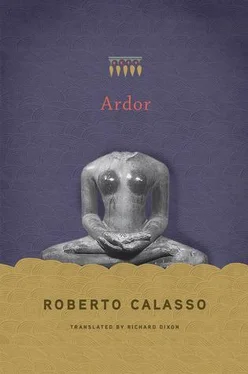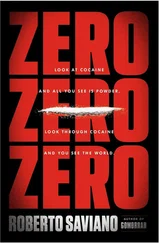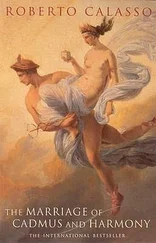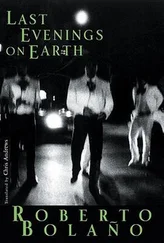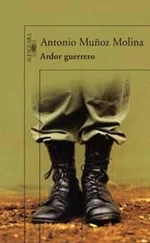Two verses follow. The first seems to be a response to the Buddha in advance, since it names the three evils that appeared to him immediately before leaving his father’s house (substituting all-encompassing “pain,” duḥkha —another key Buddhist word — for old age): “He who sees, does not see death, nor illness, nor pain. He who sees, sees all, he attains everything everywhere.” The second verse is a numerical riddle, like those often found in the Ṛgveda. Finally it says that, with this chain of arguments, the master Sanatkumāra taught Nārada to “cross the darkness.” And the word mokṣa , “release,” rings out. There is no mention of any response from Nārada: he was at last practicing silence.
* * *
Sanatkumāra’s teachings to Nārada on ātman , in the Chāndogya Upaniṣad , is a recursive progression toward an indefinite point, ātman , which, once discovered, is found to encapsulate all preceding powers. The progression moves constantly forward, but there are crucial transitions: above all the transition from discursiveness to nondiscursiveness, at the point where “speech,” vāc , becomes subordinate to “mind,” manas. Then the beginning of a hierarchical separation of the mind ( manas, citta, dhyāna, vijñāna ), which seems to trace a preliminary outline of what will for centuries be the teachings of Buddhism. Finally the rejection of a linear progression, which instead turns out to be circular. Ātman is not reached from the peak of the mind ( vijñāna ), but from there we drop down into the undifferentiated outside world, into simple “strength,” bala , then returning into the mind with another sudden leap: the passage from “space,” ākāśa , to “memory,” smara. But the most delicate and risky transition comes toward the end, the penultimate step, when Sanatkumāra ventures to infer “fullness,” bhūman , from “joy,” sukha : “Joy is fullness.” Bhūman is above all a cosmic power. It is limitless. And from this limitlessness, which is both mental and cosmic, Sanatkumāra could hazard the final step and thrust the arrow of his thought into ātman. But here the final obstacle emerges: the I, aham. Because all the characteristics of limitless expansion which belong to “fullness” also belong to the I. Which is central to every world, a self-appointed sovereign, an unlimitable domain. And, above all, it is the most insidious imitation of Self. The I superimposes itself so perfectly on Self that it can conceal it. This, in fact, is what happened during the course of Western philosophy: it never worried about giving a name to the Self, but always chose the I as the point of observation, even if it was only called that much later on, with Kant. Before him, it was the unquestionable subject, the first person of Descartes’s Cogito. But for Sanatkumāra, the I is the most daunting obstacle, that which can forever deny access to the Self. If the search had not continued, it might have been supposed that it had reached its completion with the I. But how is the final step taken? Here, once again, we see Sanatkumāra’s subtlety. It is not a question of driving away, rejecting the I. That would be pointless — and contrary to the physiology of the psyche. It is a matter of following its movements and then adding others to it, which the I could not pretend to. Only if a new entity appears, which is the Self, ātman , can we speak of “he who loves the Self,” “whose happiness is in the Self.” This new being will no longer be the I, with its illusory supremacy, because its supremacy has been transferred to the Self, with which each individual plays and interacts. The point of arrival is a dual subject who is irreducible, unbalanced (the Self is infinite, the individual is any being whatsoever in this world), intermittent (the perception of the dual subject is not something there right from the start, but something to achieve, the hardest yet most efficacious achievement). This is why the master’s teaching is sought, this is why Sanatkumāra offered to tell Nārada “what goes beyond this.”
* * *
At the age of twenty-four, after twelve years of study, Śvetaketu went back to his father, the teacher Uddālaka Āruṇi. He had studied all the Vedas, was “conceited, proud of his knowledge, arrogant.” Much like Nārada. Now he had to go beyond , guided by his father. The path is different each time. The introduction chosen by Uddālaka Āruṇi was extremely fast. It was just to let his son know that all he had learned was probably not of greatest importance. Then suddenly Uddālaka Āruṇi began to tell how the world was made, almost as if his son had never heard anything about it: “In the beginning, my child, there was nothing but being, one without a second. Some say: In the beginning, there was nothing but nonbeing, one without a second.” Similar words would be heard in Ionian Greece or at Elea. He continues by saying that this being “thought.” The being who thinks here is the one whom the Brāhmaṇas called Prajāpati. For Uddālaka Āruṇi it was enough to call him sat , the existent one. And those which were generated from him, from it, did not have the names of gods, but of elements: it was tejas , incandescent energy, and not Agni, who was a son; it was āpas , the waters, and not Vāc, who was a daughter; lastly anna , food. Compared with the Brāhmaṇas, everything became one step more abstract, though the doctrine remained identical.
Uddālaka Āruṇi, like Sanatkumāra, would also resort to recursive progressions. But with impatience. And at the end he would refer sarcastically to the “grand lords and grand theologians” who gain pleasure from these teachings. His thinking pointed elsewhere, to three words — to introducing the Self, ātman , and saying immediately: “ Tat tvam asi ,” “This you are.” In its hastiness, Uddālaka Āruṇi’s reasoning is not particularly efficacious. On the other hand, the effect of the three final words is wonderful. Cogito ergo sum seems a meager, dry fruit in comparison.
The cosmogony that Uddālaka Āruṇi concisely described to his son revealed, in its pre-Parmenidean physiognomy, a new, modern conception, quite opposite to the doctrine that Śvetaketu had learned while studying the Ṛgveda. For it is said there: “In the primordial era of the gods, being was born from nonbeing.” This doctrine is found again in the Taittirīya Upaniṣad : “In the beginning this [the world] was nonbeing and from it was born being.” And in another passage of the Chāndogya Upaniṣad we read: “In the beginning all was nonbeing, this was being. Then it developed, it became an egg.”
This presupposes that sat and asat are to be translated as “being” or “nonbeing” (as does Renou). And nothing fundamentally changes if they are translated as “existent” and “nonexistent” (as does Olivelle). But to what extent do sat and asat correspond to “being” and “nonbeing,” words that carry the weight of the whole history of Western philosophy? Asat , more than a place for that which is not, might be the place for that which is not manifest. Deeply rooted in Indian thought is the certainty that most (three quarters) of what exists is hidden, unmanifest — and thus it is destined to remain. This is incompatible with the view of nonbeing intended by both Plato and the Sophists in their arguments. The specific difference, the unbridgeable gap between Greece and Vedic thought, could already be found in this word, the first word: sat.
Читать дальше
